Get branding tips and expert advice delivered straight to your inbox.
In this blog post, you’ll learn about brand pillars as a framework for developing a solid brand strategy, with tips from industry experts. Plus, download a facilitation kit to jumpstart your brand strategy.
Included in this blog post, you’ll find information on how to define brand pillars, real-world brand pillar examples, and a free, downloadable brand pillar facilitation kit to get started.
What Are Brand Pillars?
Companies use brand pillars to define their unique position in a market. Brand pillars define the company’s brand experience in order to set it apart from competitors and are a useful organizing system for delivering your brand promise.
While it may appear simple on the surface, company branding is highly complex. At the most basic level, consumers identify brands with visual and written cues, such as logos and taglines. Beyond that, effective brands tap into an emotional register to convey their values, trustworthiness, and superior product. Communicating your company’s value in a way that resonates with customers takes a deep level of strategy and consistency across all forms of the consumer-company relationship.
Lindsay Pedersen, a brand strategist and the owner of Ironclad Brand Strategy, defines a brand as “what a company stands for in the mind of their audience, which could range from deep, like the fragrance of soap, to shallow, like a logo. [A brand] can be everything from the inside to the outside to all the way through. It’s the set of associations that makes up the relationship between a business and its audience.”
Beyond knowing what a brand is, Pedersen says that a “company should care because it is a profound source of differentiation in the mind of its customer. Being different is how a company makes money. This distinction makes it crucial to care about the value of a business in a way that is not copyable. Nurturing a brand helps you make money over an enduring stretch, ensuring the business doesn’t erode over time.”
Branding strategy, the driving force behind a company’s directional choices, shapes almost all of a customer’s perception and supports the development and growth of the brand and, therefore, of the company.
Lindsay differentiates the two terms: “A brand is what you stand for, while a brand strategy is the deliberate exercise of deciding what you want your brand to be and what you want to stand for, for your audience.”
As part of the branding strategy, brand pillars provide the architecture to support your team’s process in designing and communicating a holistic brand. A strategic approach to branding taps into your customer’s psychoanalytical needs, solves their pain points, and guarantees your place in a competitive market. In effect, the pillars help you to deliver on your brand promise, or the experience a customer comes to expect with every interaction. With each positive interaction, the brand value increases in the mind of its customers (and employees).
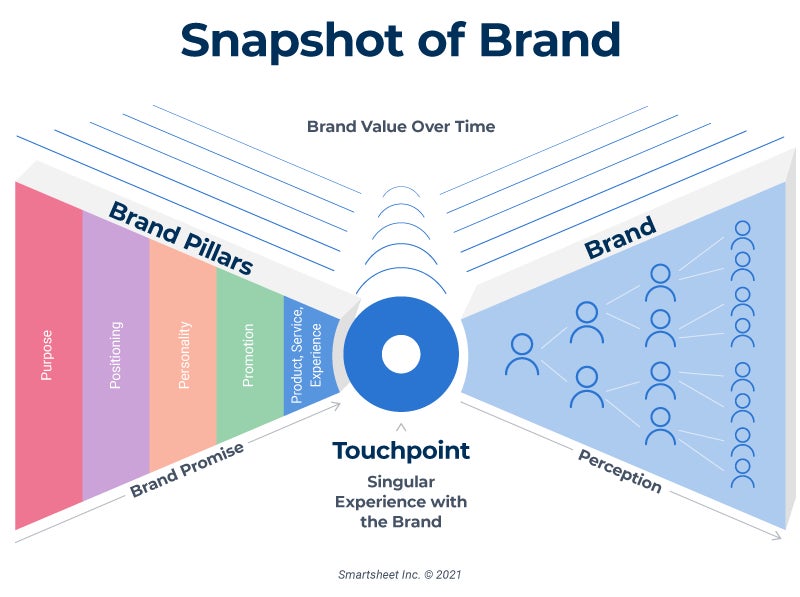
Because brands evoke a specific feeling for the consumer, you must identify the following in your brand definition:
- The problem you’re solving and who needs this problem solved
- Your market segment
- Your brand differentiation
- Your brand perception
For established companies, branding pillars should permeate every aspect of the company (and be most visible in the marketing strategy). However, Lindsay Pedersen reminds companies that “the brand goes way beyond marketing. Who should care about the brand? Everyone who’s a stakeholder in the company. Everyone in the company is the brand. Companies often have a huge miss when they delegate brand to only marketing.” New businesses (including startups) and companies that are rebranding need time to go through the process to develop sturdy, durable pillars.
It’s also essential to keep your brand consistent across all platforms. A touchpoint is any instance in which a customer interacts with a single element of the company, including online through a website or app, traditional in-person contact, or any other experience with your product or service. A touchpoint can also be more abstract, including more subtle sensory exchanges such as the music playing in the store, the mood set by lighting, the scent of new leather in a car, or the feel of new satin sheets.
In addition, a brand's perception lies with its company reputation — both internally (company culture) and externally (how employees interact with customers or stakeholders) — and by word of mouth, from consumers based on their contact with the product, services, or experience. Brand pillars are one theoretical framework used to help develop and maintain all aspects of the brand, in every touchpoint experience.
Why Are Brand Pillars Necessary?
Companies use brand power to build trust and nurture loyal customers, which is more challenging than ever in the digital age. Consumers have greater access to information, which allows them to quickly evaluate and switch between offerings.
As such, it’s critical for companies to capture a niche in the market in order to build a profitable, successful business.
Brand pillars also help to generate brand equity, or the consumer’s perception of the value of the brand over time. David Aaker, the pivotal voice of modern branding theory and author of Managing Brand Equity, elaborates on brand equity as “a set of brand assets and liabilities linked to a brand name and symbol, which add to or subtract from the value provided by a product or service.” Aaker divides assets into four categories: brand awareness, brand loyalty, perceived quality, and brand associations.
Brand pillars define these assets, which position the brand’s longevity. Each pillar uses primary and secondary attributes to help develop a messaging strategy; together, the pillars ultimately lead to a brand communication plan. In addition, the pillars help connect the brand on a human level, which helps to authentically build trust between your company and the consumer to safeguard a steadfast foundation throughout the brand’s life.
Brand Values vs. Brand Pillars
Brand values are the guiding principles a company follows, which are a subset of brand pillars. They are the internal compass for decision-making and the purpose of the organization.
Because values are the fundamental beliefs of a company, they help to motivate actions and define company culture. People who choose your brand want to align themselves with what you value as an extension of what they value.
An organization decides its company (or corporate) values to stand for a purpose, without influence by consumer perception. Brand values are decided inwardly by the company on how they choose (and hope) to present into the world. The additional influence on brand values comes from the customers. They are the company’s mirror, reflecting back if they perceive the brand values in the manner intended. Companies with strong brand values not only resonate with their consumers but can easily be identified in a single interaction.
Brand Pillars vs. Attributes
Brand pillars build the backbone that sets your company apart from competitors. Brand attributes are the assigned qualities that support those pillars, or the character traits that bring a brand personality to life (e.g., a logo or brand colors).
Furthermore, attributes include the adjectives, traits, and characteristics that add dimension to brand pillars to further define and support the efforts to deliver on the brand promise. These attributes can be timeless (e.g., the hallmark colors that people associate with your brand) or temporary for a specific marketing campaign or strategic angle. Regardless, they should all distinguish your brand from the competition. In the strategic process, the order of selecting brand attributes is crucial — assigning brand attributes must come after holistically defining your brand pillars. Otherwise, your brand is at risk of a negative perception, such as falling flat or lacking in the brand experience.
What Are the Essential Brand Pillars?
There are many ways to organize brand pillar frameworks, but most start with purpose: who you are, why you exist, and what you value.
Some brand pillar systems organize their frameworks more descriptively, such as culture (who you are), story (what you say), service (what you do), experience (how you feel), and identity (how you look). Other systems refer to the pillars in categories such as mission, vision, values, position, experience, personality, and core message.
Whichever approach you choose, it should function as a tool to define the multiple points that set your company apart from competitors and serve as the foundation of your brand and the means to deliver your brand promise.
For the purposes of this blog, we organize the pillars into five categories, sometimes called the 5Ps: purpose, position, personality, promotion, and product (or service or experience), and how each impacts consumer perception of the intended brand. Note that perception is sometimes miscategorized as a brand pillar, but is actually a consumer’s reaction to the brand strategy.
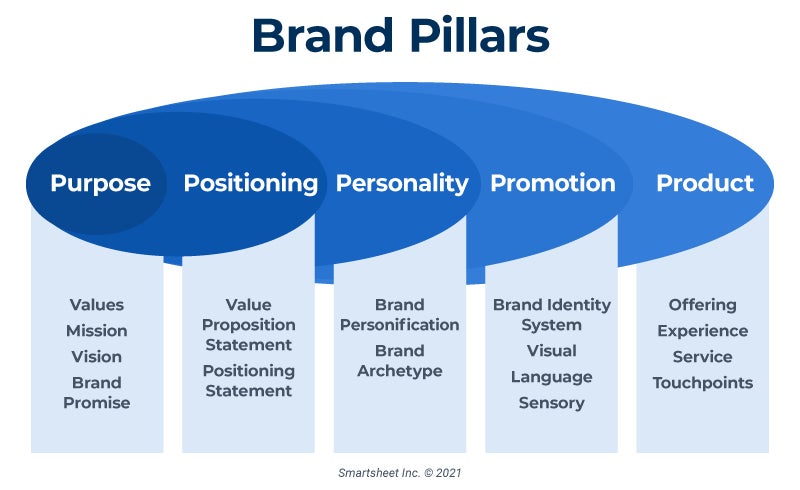
The 5Ps are defined as follows:
Purpose: Your purpose is the reason your business exists, beginning with why you started the business. All decisions, from big to small, are connected to this pillar.
- Mission: This is your impact on the people you serve. The mission focuses on what you want to give, rather than what you want to achieve. The people you serve go beyond your audience to include your employees and your company’s working culture.
- Vision: This is where you want to be in 10 years.
- Values: Aligned with the company values, brand values shape your identity and messaging. In practice, they reflect how you and your employees live out your mission.
- Brand Promise Statement: This statement details your commitment to making an impact via your mission by how your brand connects with its customer. This statement is the guide to the actions of the company and its employees.
Dr. Kim Whitler, Associate Professor of Business Administration at the University of Virginia’s Darden School of Business and the author of Positioning for Advantage, shares that “purpose is tied to building a brand image. Purpose is your direction. Where companies go wrong — and there are so many places where they go wrong — is that the purpose is too broad or too narrow. If it’s too broad, it’s not useful. If it’s too narrow, it’s constraining.”
She recommends one exercise to help refine purpose by collecting more than 100 different brand purposes to analyze them: “There’s no equation to figuring it out — you’ll be able to look at it and determine if it’s useful.”
Not only is it important to have a clear purpose for external reasons, but it is also increasingly important to attract and retain employees who seek a place of work that aligns with their own values. A 2019 Glassdoor poll found “that over three-quarters (77%) of adults across four countries (the United States, UK, France, Germany) would consider a company’s culture before applying for a job there, and 79% would consider a company’s mission and purpose before applying.”
Positioning: In order to capture your customer’s attention, you need to differentiate your brand. Doing so includes finding and protecting your brand’s place in the market and making this known to consumers. Positioning owns what your brand stands for in the mind of your customers. A value proposition statement and positioning statement support your process in determining your brand’s position:
Value Proposition Statement: Your purpose gives meaning to your brand by solving your customer’s unique problems and delivering a sense of satisfaction by relieving pains or creating gains. A value proposition statement defines your company’s offering for a distinctive place in the market.
Positioning Statement: A positioning statement requires that you perform market research. This statement is a long-term definition of the brand strategy that shifts with the market. This innovation strategy allows for the business to evolve without losing customers.
In Positioning for Advantage, Dr. Whitler describes the process of positioning concept development as “an iterative process that requires deep consumer insight, and when done correctly, can be consumer-tested throughout to assess the brand’s appeal and potential.”
She cautions that companies should prioritize criteria for assessing new concepts before starting the process. “This prioritization step is one that many smaller and entrepreneurial firms ignore. Instead, they tend to lock in on an exciting opportunity, but then they fail to compare the idea to others generated — against established criteria — to ensure that the product they develop has the best chance for achieving success.” She divides the process into four phases:
Phase 1: Identify the Consumer Problem: Identify the consumer problem that your new product, service, or experience will solve.
Phase 2: Develop Solution Statements: Identify the solution statements that address the consumer-framed problem, as articulated in Phase 1.
Phase 3: Develop Support Statements: Identify the support or evidence needed to convince your target consumers that your product, service, or experience can solve that problem.
Phase 4: Testing and Validation of the Developed Concepts: Test and validate these concepts using quantitative data that provides the following insights: which of the complete concepts is strongest (e.g., most compelling and motivating) from a consumer perspective; which concept beats the key competitors’ concept; and which is most supportable in terms of what the product can actually deliver.
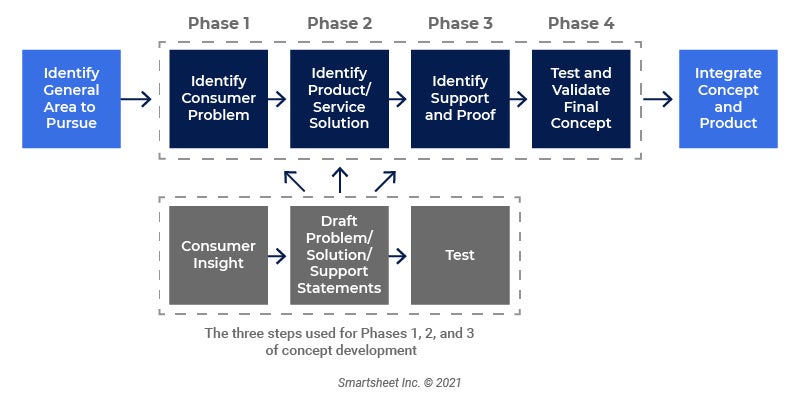
Adapted from Positioning for Advantage by Kimberly A. Whitler. Copyright (c) 2021 Columbia University Press. Used by arrangement with the Publisher. All rights reserved.
Lindsay Pedersen devised a framework to help isolate your competitive advantage, which she calls the “Uncommon Denominator.” According to her, this framework helps identify not only “what you can do well, but [also] what others cannot do well. It’s not just your strengths, it’s your uncommon strengths.”
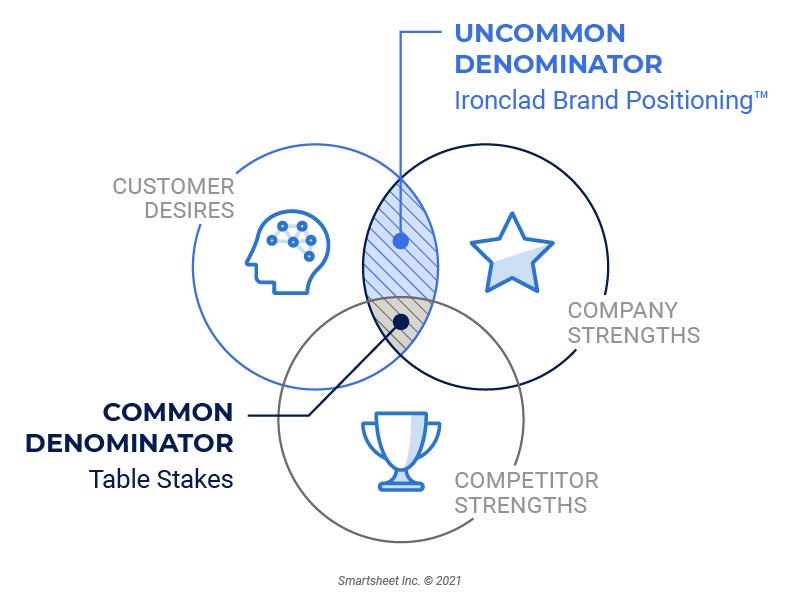
Personality: A brand personality includes the attributes or human characteristics that make up company identity. It’s critical to guide your brand’s personality for consumers, since it influences how they choose among brands. Consumers select personalities much like their own, with a desire to see their best selves reflected in a brand.
The modern idea of personality archetypes began with Carl Jung’s work in Psychological Aspects of the Mothertype. His theory proposes all personalities fall into four categories, spanning 12 archetypes:
- Builds Connection:
- Jester
- Lover
- Everyman
- Blazes a Trail:
- Hero
- Outlaw
- Magician
- Provides Stability and Structure:
- Creator
- Caregiver
- Ruler
- Seeks Freedom and Knowledge:
- Explorer
- Innocent
- Sage
Promotion: Brand promotion is about communicating your brand personality. It serves as an extension of the brand personality by organizing brand assets (or proprietary traits) into an identity system. This brand identity system maintains consistency across all platforms, triggering recall and evoking memorable feelings in your audience.
Brand promotion is different from sales promotion: With the former, you build brand equity with a long-term strategy, whereas the latter aims for short-term sales to capture demand during a specific period. Once you create the personality, decide how to convey it at every opportunity.
Attributes such as visual images, written and verbal communication, audible cues, and any other sensory experiences are all part of bringing the brand personality to life. Customers can sense when brand promotion aligns with your pillars — and, conversely, when it doesn’t. Consistency is crucial: Otherwise, your brand is at risk of being damaged. A brand communication strategy helps your company achieve business objectives by developing consistent brand promotion processes.
Remember that people gravitate toward building connections with other people (vs. with a product). As such, storytelling is another useful component of promoting your brand. Consistency in brand promotion generates value via the interactive experience, which ideally should increase your brand equity and customer loyalty. Your brand identity system and assets should work in tandem to build a remarkable customer experience and superior product that together deliver an all-encompassing emotional experience through a combination of the following:
Visual Identity: This term refers to how your brand shows its identity, in the form of a brand style guide. These aspects include logo (and logo variants), brand colors, graphic image style, shapes, and typography. Also consider the spaces where your brand will appear (i.e., online vs. a physical product) and how you can distinguish your product visually from competitors. The psychology of color influences your choice in branding, but keep in mind that it is more important to differentiate your brand in the market than to evoke emotion through color theory. Also, consider visual hierarchy — brains process color after shape but before written content.
Language: Tone of voice and language express how your brand would talk as a person. If your brand personality is casual, what language would best convey this? Tone of voice applies distinct manners of speaking (i.e., cheerful, clever, authoritative, friendly) throughout all written content. Also consider verbal interactions, such as the language your employees use in customer interactions or the tone of voice in commercials.
Other Senses: The more subtle touchpoints and experiences a consumer encounters are often overlooked, but are significant in creating an all-encompassing brand experience. These sensory experiences — aural, feel/touch, taste, smell — provide a deep, holistic expression of the brand’s personality.
While brand promotion is creative work, be realistic about your brand promotion in action. You always risk creating a negative interaction for a consumer, which can damage your brand. In your brand promotion strategy work, include a contingency plan to improve recovery time when things go wrong.
Managing brand promotion can be challenging, especially across a large organization. Learn more about brand asset management and how to maintain consistency in every touchpoint.
Product, Service, Experience: The entirety of your brand strategy and the delivery of your brand promise is most apparent in what you offer. Your offering, in the form of a product, service, or experience, must thoroughly express the brand, from the packaging (if you have a physical product) to customer service. Continuously audit how your offering re-enforces your brand, and identify missed opportunities to further generate equity for your brand.
Perception: While perception is not a brand pillar, it is essential to use feedback loops to continually assess your brand’s function in the marketplace. Develop and administer brand metrics to gauge how well (and if) your brand is delivering on its promise. Metrics like brand experience surveys help to provide data on areas to focus and improve, which will strengthen your brand value.
How to Determine Your Brand Pillars
There are a variety of ways to determine your brand pillars. A guided framework helps develop your strategic direction as you build your brand.
Leading keynote speaker and two-time Wall Street Journal best-selling author of The Illuminated Brand, David M. Corbin, says companies need to “visualize how they want their customers and prospects to think and feel, and [what they want customers to] know about them.”
Start with what he calls “an impression management and sensation transfer. What sensations, thoughts, beliefs, and feelings do you want your customer to have about your product? Also, do a competitive meta-analysis on what other products or services are out there, and how their customers feel about them. It’s a great opportunity to find the gaps in where [the brand promise] is not being fulfilled [through its products or services].”
Lindsay Pedersen’s method in Forging an Ironclad Brand: A Leader’s Guide involves eight steps with frameworks under each step:
1. Orient: Determine your target customer and your competitive frame of reference.
2. Listen: Deepen your understanding of your target customer through research and insights.
3. Examine: Look at the data and channel it into your brand building by identifying uncommon denominators.
4. Ladder: Specify the promise within the uncommon denominator zone, support it with fact, and leverage it to provide a large emotional reward.
5. Characterize: Define the character of your brand, and articulate the qualities of your business as if it were a person.
6. Stage: Apply the brand strategy elements according to where your customers are in their journey with your brand.
7. Activate Creative: Develop creative messaging to communicate your brand for your audience.
8. Zoom Out: Identify how you will deliver on-brand throughout every customer experience.
Brand Pillar Workshop Facilitation Kit Templates
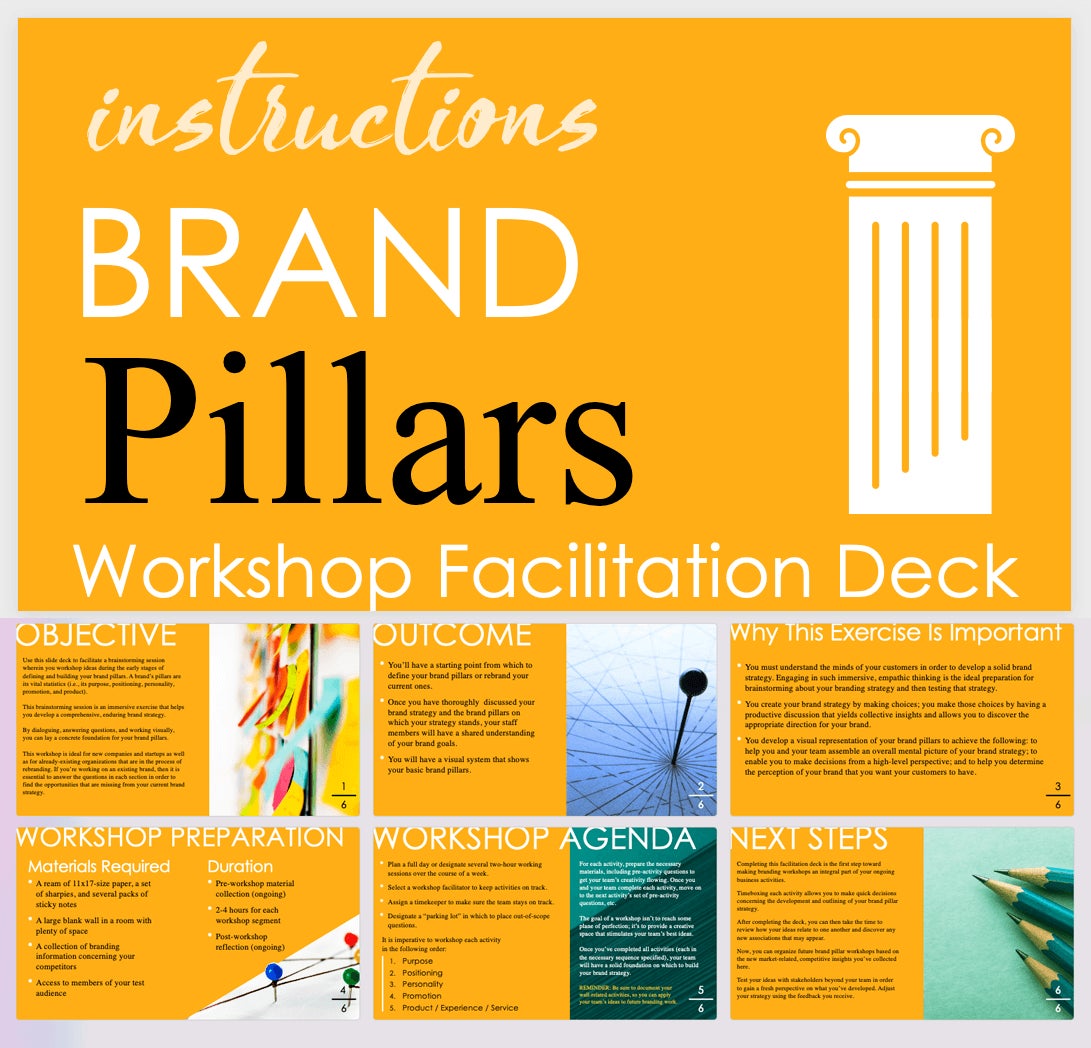
Define and develop your brand pillars with these downloadable brand pillar workshop facilitation kit templates, available to download in Microsoft PowerPoint and Google Slides formats. This template bundle includes a Purpose Activities template, Positioning Activities template, Personality Activities template, Promotion Activities template, and Product/Experience/Service Activities template, designed to boost your team’s creativity throughout the brand pillar strategy process.
Brand Pillar Examples
The most successful companies create brand pillars that seamlessly uphold their brand strategy. Examples of such companies include Apple, which famously used visual branding to pivot a lagging company, and Disney, which is known for its timeless storytelling approach.
Apple is a prime model in exploring how the company’s brand strategy starts with purpose as the foundation of building a lifestyle brand. Using the company mission to “bring the best personal computer experience to students, educators, creative professionals, and consumers around the world through its innovative hardware, software, and internet offerings,” its core positioning revolves around simplicity, innovation, and people.
Using this position, the Apple personality revolves around a lifestyle that moves from creative product application to seamless integration among all modern life arenas (i.e., work, fitness, entertainment, home). In fact, this is such the case that the switching cost, the amount a consumer pays to leave one brand for another, is difficult once a consumer has integrated an Apple product into daily life. Using Apple’s brand promotion — “Think Different” — Apple products and the Apple experience deliver on the brand promise through sleek, forward-thinking, and user-focused technology.
Numerous examples of companies with airtight branding strategies offer insights into how a company delivers on its purpose. In the chart below, you’ll find select examples that highlight the strategic relationship between components of the company’s purpose (mission, vision, values, brand promise statement) expressed through aspects of each brand pillar.
Brand Pillar Examples: Positioning
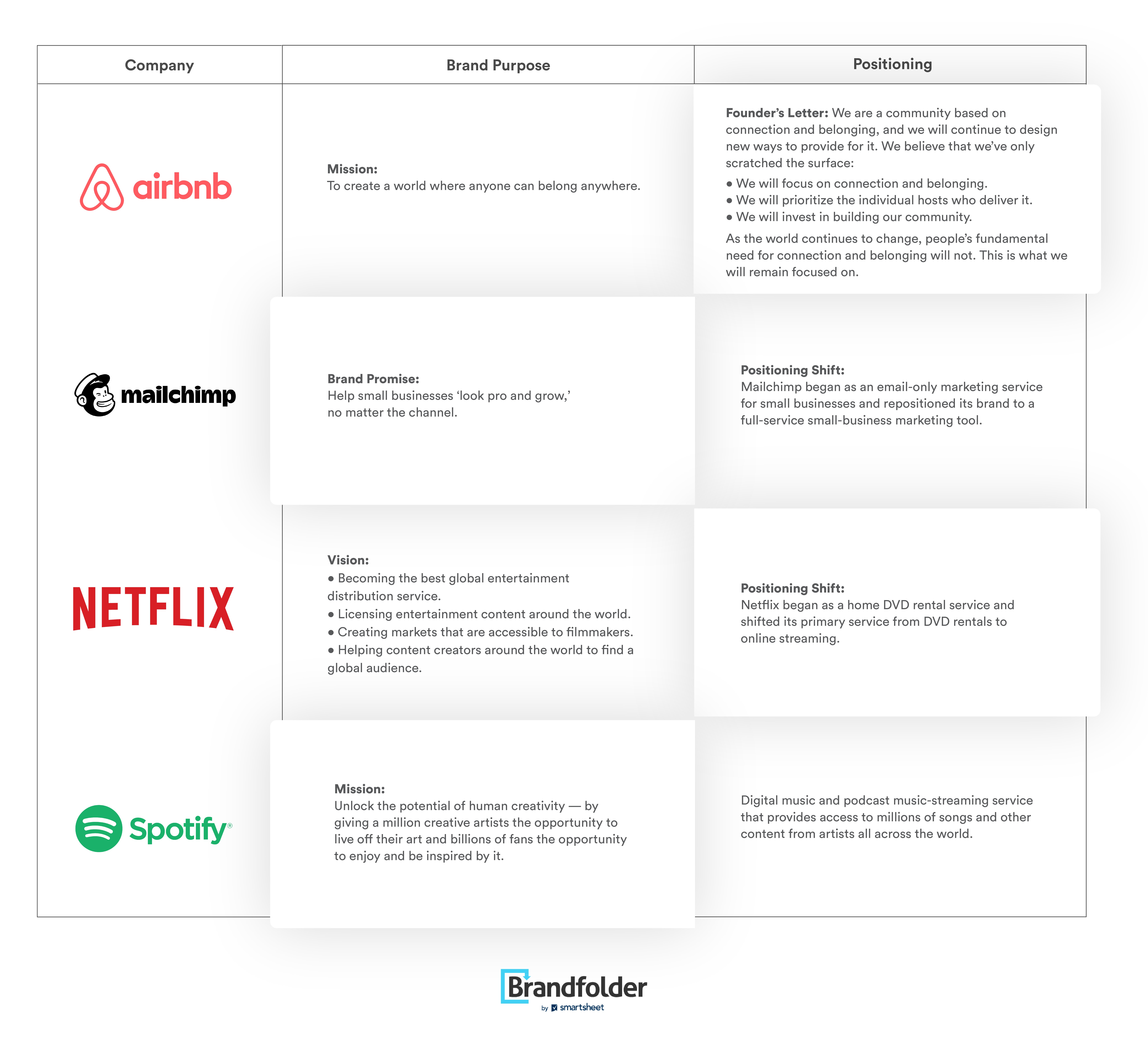
Brand Pillar Examples: Personality
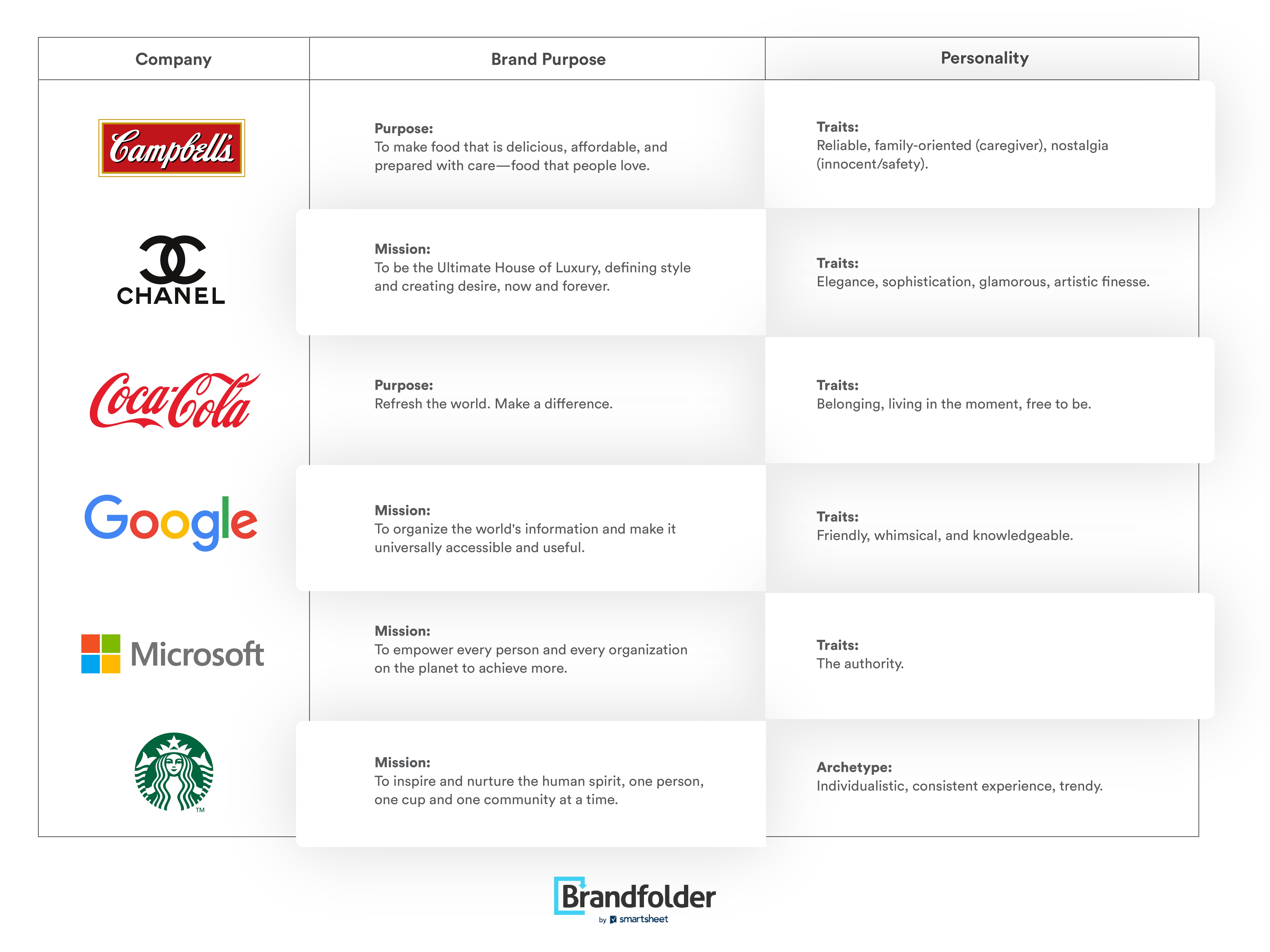
Brand Pillar Examples: Promotion

What Are Brand Messaging Pillars?
Brand messaging pillars or content pillars are structures for a company's communication plan. They are based on the master brand pillars. These statements guide the language style for all communication. The messaging pillars ensure the consistent tone of the brand.
A natural hierarchy emerges when your team develops messaging pillars from the brand pillars. The former expands on the attributes already created in your brand strategy exercises. Your goal is to create messaging that resonates with your customer segment’s values, perceptions, and lifestyle. Use a document to start with elements of your brand pillars to influence the messaging pillars and the statements derived from them.
Brand messaging pillars are often a two-word messaging build of a powerful marketing word and a brand element, such as “exceptional care” or “fast delivery.” Under each pillar, create statements written in the brand voice as a talking or selling point. For example, “You’re in good hands, every step of the way” or “we get you what you need, when you need it.”
Brand messaging pillars help content creators to stay on brand. It is common for brand pillars and brand messaging pillars to overlap a bit — this contributes to the confusion between the two concepts.
If you choose to hire an outside agency — or simply need clarity at the beginning of the messaging process — the brand communication plan may include a brand brief to provide a comprehensive overview of the company’s desired perception. The brand brief document uses the defined brand pillars, company objectives (long and short term), and company strategy to develop a branding strategy. The document is the foundation for the design needs for developing ad campaigns as part of the communication plan.
Messaging pillars are also valuable in converting customers to make a purchase and aligning customers with your brand. The messaging pillar statements help guide the language necessary depending on the purchase stage. There are three stages of the purchase process influencing the messaging strategy, as follows:
Pre-Purchase: The purpose of the messaging is to educate your audience about the product or help them understand how to purchase it. The goal of this messaging is to increase brand appeal through ads and consumer searches.
Purchase: At this stage, your goal is to help your audience evaluate and compare brands, and to reinforce how consumers affiliate themselves with your brand (in order to convert them to buyers). The messaging reaches consumers in a positive user experience, like the interactions with the sales team or the store ambiance.
Post-Purchase: Once consumers have made a purchase, the primary goal is retention. Loyal customers also serve a secondary purpose as an advocate of your brand to potential customers. These messages occur in areas such as experience surveys, customer support, and loyalty programs.
Getting Started With Brand Pillars
Leveraging brand pillars can help any brand to better define its unique position in a crowded market and set itself apart from competitors. We hope these real-world examples along with the facilitation kit are helpful tools to get you and your team started.
If you’re interested to learn more about how Brandfolder can help you further define and maintain your brand pillars and guidelines, check out our Brandguide.

